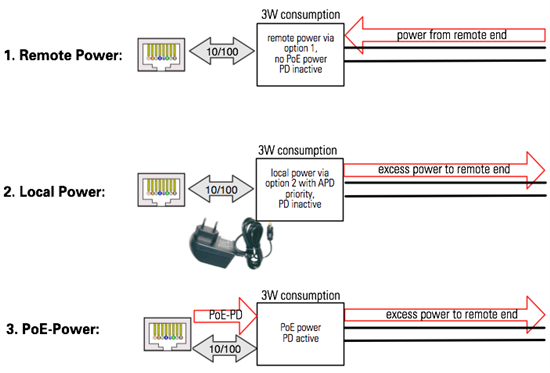I have a special application, where I want to provide local power, e.g. via option 1, for cases when there is no PoE power available. Conversely, if there is PoE power available, we would like to transfer part of that power over the same local power pair to a remote location, i.e. reverse power flow. Has any body done this?
-
Ask a related question
What is a related question?A related question is a question created from another question. When the related question is created, it will be automatically linked to the original question.


